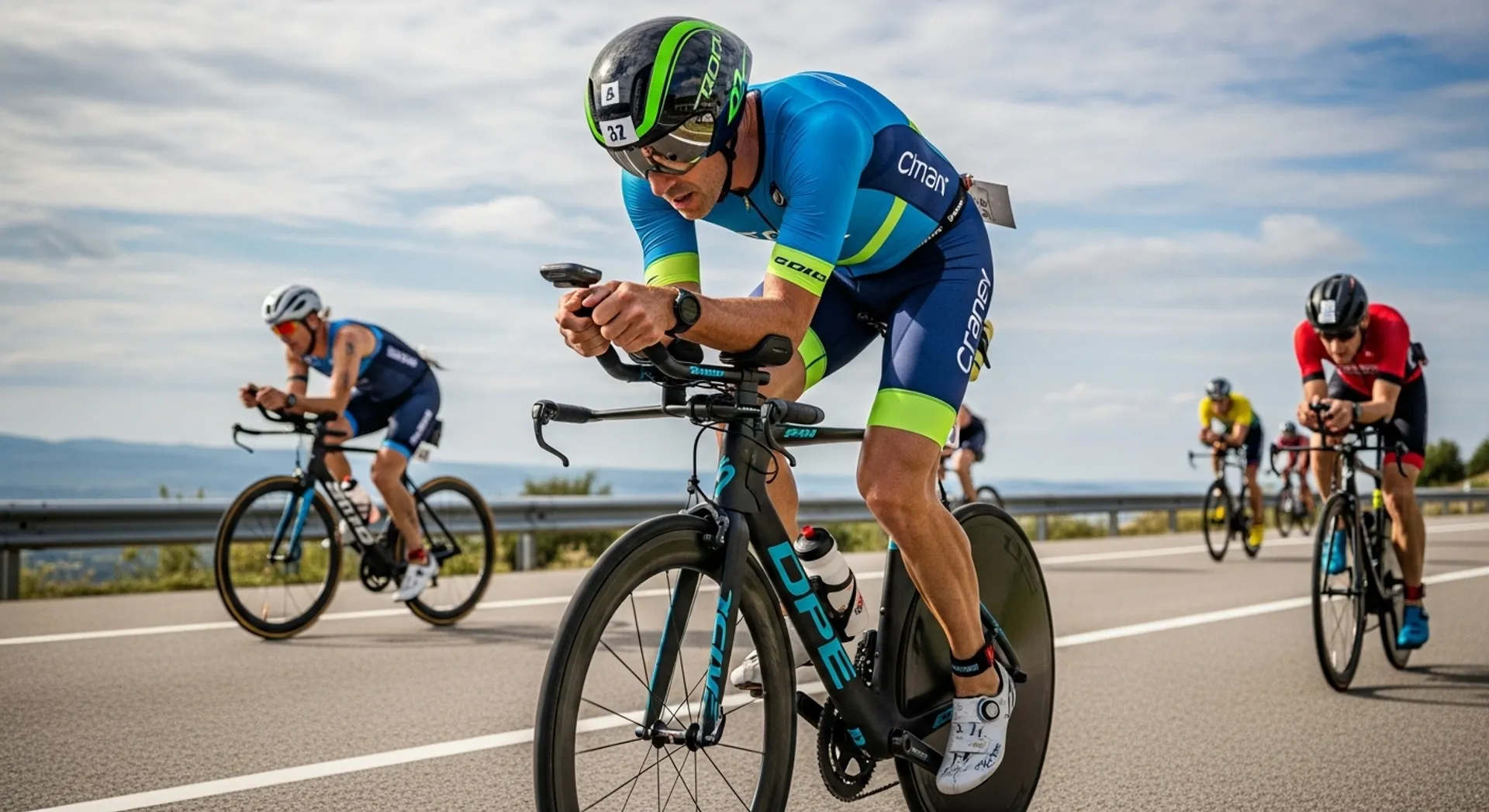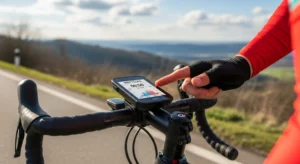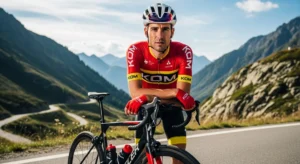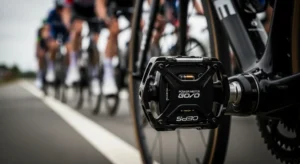For all of us riding with power meters, this athlete spotlight carries special significance. Tom Gore isn’t just a world-class age group triathlete — he’s also the leader of the Tech Support department at iBike (Velocomp). If you’ve ever called iBike with technical questions, there’s a strong chance Tom has been the knowledgeable voice on the other end of the line, patiently guiding you through setup, calibration, or troubleshooting. It’s inspiring to know that iBike doesn’t just manufacture power meters — they live and breathe the philosophy of data-driven training every single day.
Tom’s story represents far more than corporate authenticity, though. His journey from 207 pounds to elite age-group competitor at 148 pounds demonstrates the transformative power of commitment, community, and intelligent training. He’s living proof that dramatic physical transformation and competitive success are achievable for anyone willing to embrace discomfort, learn from setbacks, and apply proven training principles consistently over time.
I was honored to catch Tom between technical support calls and hard training sessions to discover what drives this remarkable athlete. His insights about weight loss, mental toughness, training with power, and the importance of community support offer valuable lessons for any cyclist or triathlete pursuing ambitious fitness goals. Whether you’re just starting your fitness journey or you’re a seasoned competitor looking for that extra edge, Tom’s experience provides a roadmap worth following.
The Weight Loss Journey: From 207 to 148 Pounds
Tom’s athletic background began long before triathlon entered his life. He was a competitive swimmer in high school, achieving state champion status and learning mental toughness from exceptional coaches who understood that athletic success requires more than just physical talent. These early lessons in perseverance would prove invaluable years later when facing the challenge of dramatic weight loss and the brutal introduction to cycling that awaited him.
Like many former athletes, Tom experienced significant weight gain after his competitive swimming career ended. The combination of reduced activity, demanding work schedules, late-night eating, and regular beer consumption pushed his weight up to 207 pounds — nearly 60 pounds above his current racing weight. At 5’7″, this extra weight created not just aesthetic concerns but genuine health problems, including significant pain in his feet and legs that made daily activities uncomfortable.
“I had gained a bunch of weight, actually I was up to about 207 pounds,” Tom recalls. “I started having a lot of pain in my feet and legs. I decided that enough was enough, and got back in the pool to try and drop some weight.” This decision — choosing action over resignation — marked the turning point that would eventually lead to triathlon success and a complete lifestyle transformation.
The Swimming Renaissance
Returning to the pool felt natural for Tom given his competitive swimming background. The low-impact nature of swimming made it an ideal starting point for someone carrying excess weight and experiencing joint pain. Swimming provided cardiovascular exercise without the joint stress that running or cycling might have caused at his heavier weight.
The initial results were encouraging. Tom dropped from 207 pounds to approximately 185 pounds through consistent swimming and increased attention to his diet. This 22-pound loss, while significant, represented just the beginning of his transformation. He was building momentum, reestablishing exercise habits, and beginning to reconnect with his identity as an athlete rather than a former athlete who had let himself go.
The dietary changes that accompanied his return to swimming laid the foundation for sustainable weight loss. Rather than crash dieting or following extreme restrictions, Tom focused on practical improvements: reducing late-night eating, moderating alcohol consumption, and paying attention to portion sizes and food quality. These changes, combined with regular exercise, created a moderate caloric deficit that allowed steady fat loss without the muscle loss or metabolic damage that often accompanies more aggressive approaches.
The Brutal Introduction to Cycling
Tom’s entry into cycling reads like a cautionary tale about the importance of gradual progression — or alternatively, as testament to the power of sheer stubbornness in overcoming physical challenges. At the pool, Tom met Emmanuel, a French scientist working for Scripps who would become like a brother to him. They connected over daily swim workouts, with Tom putting Emmanuel through rigorous swimming sessions that tested the scientist’s aquatic abilities.
Emmanuel, an experienced cyclist with strong legs developed over years of riding, convinced Tom to try cycling. What happened next could have easily ended Tom’s cycling career before it started. “He took me directly out for a 60-70 mile ride on the first ride,” Tom remembers. “It was probably an effort to try to kill me for the swim workouts I was putting him through.”
For someone who hadn’t been cycling regularly and was still carrying extra weight, a 60-70 mile first ride represents an absolutely brutal introduction to the sport. Most cycling coaches recommend beginners start with rides of 10-15 miles, gradually building distance over weeks and months. Jumping straight to 60-70 miles invites injury, overwhelming fatigue, and the kind of negative experience that makes people never want to ride again.
Mental Toughness Meets Physical Reality
This is where Tom’s competitive swimming background and the mental toughness his coaches had instilled years earlier became crucial. “It didn’t work,” Tom says of Emmanuel’s apparent attempt to break him. “I’m really headstrong. I wouldn’t give in to the pain and I made it through. However, when I got home, I was seriously ready to cry.”
The ride revealed Tom’s complete lack of knowledge about cycling nutrition and hydration — critical factors for endurance performance that every experienced cyclist takes for granted. Without proper fueling during the ride, his body was running on empty for hours. Without adequate hydration in what was likely warm weather, he was probably significantly dehydrated. The combination of excessive distance, inadequate fueling, improper hydration, and carrying extra body weight created a perfect storm of suffering.
“Damn, did I do a number on myself!” Tom admits. Yet rather than writing off cycling as too painful or difficult, rather than resenting Emmanuel for the brutal introduction, Tom pushed through. This resilience — the ability to endure extreme discomfort and return for more — separates athletes who achieve transformative results from those who give up at the first major obstacle.
From Swimmer to Triathlete
Most people would need significant recovery time and gentle encouragement to attempt cycling again after such an experience. Tom, however, kept riding. He learned about proper nutrition and hydration. He built his cycling fitness gradually (after that initial shock). He continued swimming. And eventually, the natural progression led to triathlon — a sport that would combine his swimming background with his developing cycling abilities and add running to the mix.
“Eventually, I competed in my first triathlon and did pretty well,” Tom recalls. This early success — likely driven by his strong swimming background giving him a significant advantage in the first discipline — provided encouragement to continue. “So I trained a bit more and placed in my age group in my second race.” The progression was rapid: from first-time triathlete to age-group podium finisher in just his second race.
This quick success wasn’t purely genetic luck or beginner’s advantage. Tom started training with serious athletes and connected with one of the best triathlon mentors in Florida. The importance of quality coaching and experienced guidance cannot be overstated, especially for athletes transitioning from single-sport backgrounds to the complex demands of triathlon. A good mentor provides not just training plans but also tactical knowledge, equipment guidance, and the accumulated wisdom of years of experience.
The Competitive Evolution
“He continues to share his knowledge of triathlon with me and for that I am grateful,” Tom says of his mentor. “Now, I find myself competing for not only the age group wins, but overall status too.” This evolution — from complete novice to age-group competitor to overall podium contender — typically takes years of dedicated training and represents exceptional athletic development.
The fact that Tom now competes for overall victories (meaning he’s racing against athletes of all ages, not just his age group) indicates truly elite-level performance. In most triathlon races, overall podium positions are dominated by professional or semi-professional athletes in their late twenties and early thirties. For an age-group athlete to compete at this level requires not just fitness but also tactical sophistication, efficient technique across all three disciplines, and the kind of smart training approach that maximizes results from available training time.
The Power of Community and Support
When asked about his inspiration for racing, Tom’s response reveals something profound about sustainable athletic success. Rather than citing personal achievement, prize money, or ego gratification, Tom points to relationships and community as his primary motivation.
“I really honestly race for the friends and family I have accumulated over the last 4-5 years of racing,” Tom explains. “It is truly a great sport and all of the friends and local riders and racers that I train with have pushed me. The community is so supportive and motivating. They have really been a motivating and encouraging factor in all of my endeavors.”
This community-centered approach to competitive athletics creates sustainability that purely results-focused motivation cannot match. When racing becomes primarily about personal records or podium positions, inevitable plateaus and setbacks can destroy motivation. When racing centers on community, friendship, and shared experiences, the sport remains enjoyable and meaningful even during periods of slower progress or disappointing results.
The iBike Family
Tom’s professional environment at iBike reinforces this supportive atmosphere. “The crew here at iBike really is a family,” Tom emphasizes. “Everyone has been very encouraging; John, JoAnne, Travis, Chris, Ricardo, Jeff, and Antonio are all great to work with. I am blessed to have a job doing what I love.”
Working at a power meter company while training seriously as a triathlete creates unique advantages. Tom has access to the latest technology, technical expertise to maximize its benefits, and colleagues who understand the demands of serious training. This environment supports rather than conflicts with his athletic pursuits — a significant advantage for amateur athletes who typically must balance training with careers that may not be particularly supportive of their athletic endeavors.
Tom singles out Jay Todd as a particularly important influence: “Jay introduced me to training with power. He is the one that really got me started with an iBike, and





